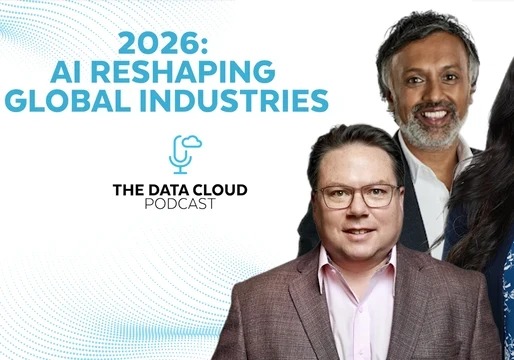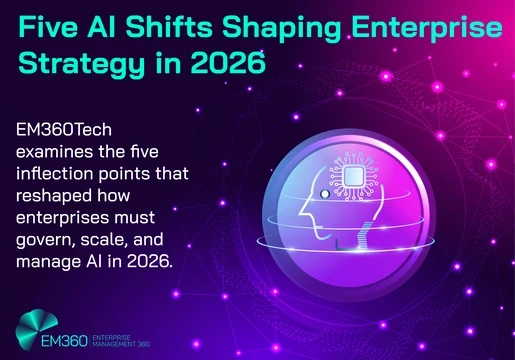In today’s digital age, organisations are swimming in excessive amounts of data. And as the amount of data rises, they face the ever-growing challenge of trying to stay afloat in this sea of information.
For organisations drowning in big data, AI is the lifeboat to help them ride out the storm. Pairing AI with analytics allows businesses to make sense of large amounts of data by extracting actionable insights from datasets to uncover hidden patterns, make accurate predictions and optimise the decision-making process.
It gives organisations a more comprehensive view of their operations, objectives, competitors and market, allowing them to not only understand what happened, but also why it happened, what will happen next, and what could happen if action is taken.
Steering the AI analytics ship, however, is a momentous task in itself. Companies must have a clear understanding of how AI analytics works and the potential benefits it brings.
In this article, we’re delving deep into the meaning of AI analytics, exploring some of its most notable benefits while providing real-world examples of it in action.

What is AI Analytics? Definition
AI analytics is a type of data analysis that uses machine learning (ML) to generate insights from large amounts of data.
By pairing AI with business intelligence, companies can take control of all of their data and transform it into actionable use cases – from predicting and detecting customer behaviour to developing strategies to optimise business performance.
AI analytics does not require human input, and businesses can use its results to make data-driven decisions that help them remain competitive in all industries.
As with all ML technologies, AI gets more intelligent and accurate with time. This means it can learn industry preferences and customise its results to cater to individual business needs and objectives.
AI Analytics vs Data Analytics
Unlike data analytics, AI analytics is led by machines rather than humans. The meaning of AI analytics is to process data quicker and at a much larger scale than human-led analytics, as well as to make algorithms more accurate.
But AI analytics should not be seen as a replacement for traditional data analytics. Instead, companies should use AI alongside data analytics to supplement their team's expertise.
For instance, businesses can use AI to identify fraud patterns, predict customer actions, or recommend products based on customer preferences.
A marketing professional can then take this information, examine the patterns in the data, and apply it to future marketing campaigns.
The benefits of AI Analytics
There are a number of benefits businesses can expect when using AI analytics.
For one, AI can quickly sift through data, identify patterns, and discover correlations that humans might overlook. This leads to more accurate predictions and a deeper understanding of customer behaviour, market trends, and business performance.
The use of AI also enables companies to automate their processes, reducing the time and resources required to make complex, data-driven decisions.
Be sure to read our Top 10 for the ten best AI Analytics Tools for 2023!
Machines don’t require the downtime that humans need either, so data processing can be continuous. Companies can simply feed data to an AI and leave it alone to process, learn from and harness insights from that data.
This not only saves time and resources but also allows employees to focus on more strategic and creative aspects of their work, leading to increased productivity and a more agile organisation.
Examples of AI Analytics

AI analytics offers a wide range of use cases across various different industries. Here are just some examples of AI analytics in action:
- Natural Language Processing (NLP): NLP-powered AI analytics allows companies to analyse vast amounts of unstructured text data to extract valuable insights and sentiments. This is how AI companies build generative AI products, such as OpenAI’s chatbot ChatGPT and Google’s Bard.
- Predictive Maintenance: AI can analyse data from sensors and machines to predict equipment failures and maintenance needs before they happen. By identifying these issues in advance, businesses can reduce downtime, prevent costly breakdowns, and optimise maintenance schedules.
- Financial Fraud Detection: AI is also instrumental in detecting fraudulent activities in financial transactions. ML algorithms can analyze vast amounts of transaction data, identify patterns indicative of fraud, and raise alerts in real-time, protecting businesses and customers from financial losses.
- Customer Sentiment Analysis: AI allows businesses to process customer feedback from various sources, such as social media, surveys, and reviews, to gauge customer sentiment. This helps understand customer satisfaction levels, identify pain points, and make data-driven enhancements to products and services.
- Supply Chain Optimisation: AI can optimise supply chain processes by predicting demand to improve inventory levels and identify potential bottlenecks. This leads to cost savings, improved efficiency, and quicker response times to market dynamics.
- Healthcare Diagnosis and Treatment: In healthcare, AI can help medical professionals make diagnoses by recognising medical images and recommending personalised treatment plans.
- Personalised Marketing: AI analytics is incredibly useful for marketers. Machines can analyse customer data to deliver personalised marketing campaigns, allowing markets to understand customers' individual preferences and behaviours and create more personalised marketing material.
- Autonomous Vehicles: AI can process data from various sensors to make real-time decisions, ensuring safe and efficient navigation on roads for self-driving cars.
These use cases demonstrate the versatility and applicability of AI analytics across different sectors, demonstrating its potential to drive innovation for businesses and society as a whole.







Comments ( 0 )